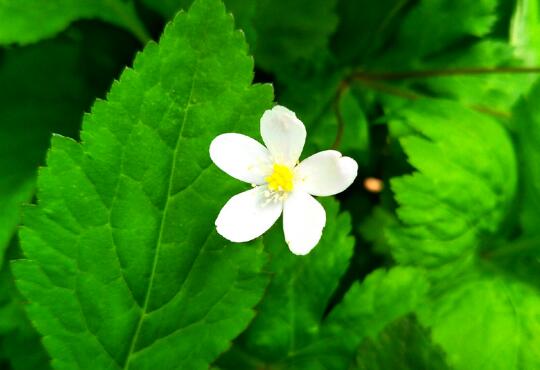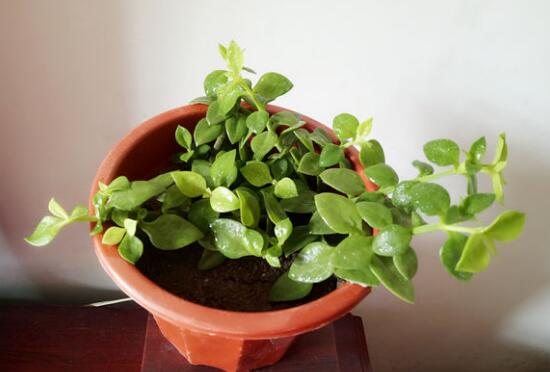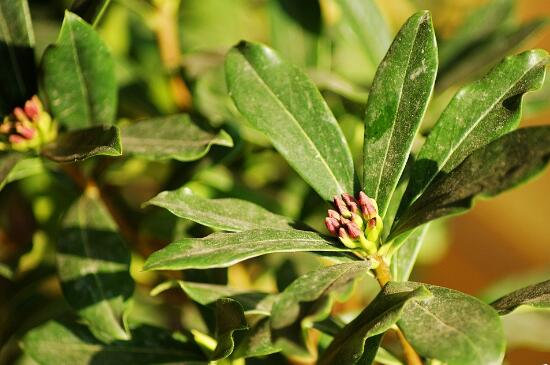Common diseases and insect pests of anemone and their control, drug control is effective.
Diseases and insect pests are the most undesirable problems encountered in the process of plant growth, and anemone is no exception. Such problems are very harmful to plants, which not only affect their ornamental properties, but also lead to plant death in serious cases. What should be done about common diseases and insect pests of anemone and their prevention and control? The following small series takes everyone to understand.
Common diseases and insect pests of Anemone chinensis and their control

To know the common pests and diseases of anemone and how to prevent them, we must first find out which pests and diseases are specific according to the symptoms, and then carry out targeted treatment, because the prevention and control methods of each pest and disease are different, the specific details are introduced below, and friends who are troubled in this regard can understand.
aphids
Aphids are one of the most destructive plant pests in the world. They are harmful to most plants, including anemones. This pest sucks the sap from leaves, stems, tender heads and young ears of plants, causing them to lose a lot of nutrients and eventually die.
Control method: For this kind of anemone pest, the most direct method is to directly use the pesticide to spray it. In terms of pesticides, we can use 50% anti-pirimicarb wettable powder 3000 times solution or 50% marathon emulsion 1000 times solution.
cutworm
The cutworm is a pest of Lepidoptera of Noctuidae. Spring is the high incidence period of this pest every year. Therefore, we should pay special attention to this season. This pest usually hides in the soil during the day and comes out at night to feed on the tender stems of Anemone. If it is not treated for a long time, it will lead to plant death.
Control method: We can use 80% dichlorvos or 50% phoxim mixed with water and then irrigate the roots of the plants to kill this pest.
thrips
Thrips is a general term for Thysanoptera insects. This pest mainly damages the branches, leaves, flowers and fruits of Anemone. The damaged leaves and branches will harden, curl and wither, and the fruits will harden after being damaged. In severe cases, it will also affect the yield of fruits.
Control methods: If the anemone is damaged by this pest, we must control it in time. The most direct control method is that we can use 25% thiamethoxam 3000-5000 times to directly spray it.
canker
Rot disease is a disease caused by fungi, which can infect young seedlings and attack in flowering stage. It can occur on flowers, fruits, leaves and stems of anemone. If this disease is not treated in time, it will lead to gradual wither and death of plants.
Control method: When we deal with this kind of anemone disease and insect pests, we can use 40% putresyl wettable powder 15- 20g to apply medicine to the diseased plants, usually once every 3-5 days, 2-3 times later can be cured.
downy mildew
Downy mildew is a plant disease caused by downy mildew in fungi. This disease may occur from seedling to harvest stage. Many pale yellow nearly round to polygonal disease spots will form on the leaves of anemone when the disease occurs, and the disease spots will gradually spread, finally leading to plant death.
Control method: When we deal with downy mildew, if the damage is light, we can use 400-600 times of HILOT Kaishuang diluted spray to control it. If the disease is serious, we need to use 100-300 times of HILOT Kaishuang to apply it.
powdery mildew
Powdery mildew is a disease caused by powdery mildew infection. Many white dust spots appear on the leaves of Anemone when the disease occurs, and gradually cover the whole leaf surface with time, resulting in the plant unable to carry out photosynthesis and gradually shrinking and dying.
Control method: If we find powdery mildew symptoms on the plant, we must treat it at the first time. When treating, we can use triadimefon 800 times liquid spray to apply medicine to the plant. Generally, the drug is applied once every 7-8 days. Generally, it can be cured by spraying three times.
Common diseases and insect pests of Anemone chinensis and their control
Pest Control of Anemone
The main pests in Anemone cultivation are aphids, thrips and cutworms. Anemone pests can be controlled by using commonly used pesticides. Before planting, the soil can be strictly disinfected, which can reduce the occurrence and spread of pests to a certain extent.
Diseases of Anemone and their control
Common diseases of anemone include rot, blight, gray mold and powdery mildew.
canker
Putrefaction usually occurs and spreads under wet conditions. It's a disease caused by pythium. Rot disease can cause germinating seeds to rot or the roots of plants to develop, followed by water-soaked rot on roots and stems, causing slow growth or even death. To prevent rot disease, the first thing is to disinfect the soil. Quinitrobenzene or soil bacteria and insects can be mixed with seeds to sterilize and disinfect the soil. If the disease has occurred, it can be sprayed with antibacterials.
damping-off
It's caused by Rhizoctonia. The disease symptoms are brown leaves, more obvious depression, the disease plants will produce brown orange-like mycelium groups. Chipco 26019 can be used to kill the disease.
gray mold
It is a disease that affects both young plants and flowering. The infection of Botrytis cinerea was promoted by higher air humidity and water film on plant surface. Chlorothalonil carbendazim spray can be used to control gray mold.
powdery mildew
The cause of powdery mildew is powdery mildew infection. The main symptoms of the disease are spiral curly leaves, leaves, stems and buds have round white spots, serious cases will lead to bud stop growing. The disease can be prevented and treated by spraying triadimefon 800 times solution. If the condition is serious, it should be sprayed again every 7-8 days, and three consecutive sprays can basically be controlled.
Prevention and control methods of common diseases and insect pests of Anemone
The most common diseases of Anemone are rot caused by Pythium, blight caused by Rhizoctonia, gray mold caused by Botrytis cinerea and powdery mildew caused by powdery mildew.
A, rot disease is a disease that can be caused by several kinds of pythium, regardless of the temperature, there is a possibility of occurrence, wet conditions are more likely to occur and spread rot disease, it can make the germinating seeds rot or plant roots disease, so that plants grow slowly or even die. By Pythium infection, the roots and stems of infected plants will appear water-like rot.
Control methods:
First of all, the soil is disinfected, which can be treated with quintozene or soil bacteria and insects, and sterilized by mixing soil. If the disease has occurred, it can be sprayed with antibacterials.
2. Rhizoctonia can cause bacterial wilt. This kind of bacteria likes warm and humid environment. Compared with rot disease, its symptoms are brown and sunken more obviously. Sometimes brown orbicular mycelia can be found at the junction of diseased plants and substrates.
Control methods:
MedaIIion and Chipco26019 can be used to kill.
Botrytis cinerea is a disease that can infect seedlings and occur at flowering stage. Higher air humidity and water film on plant surface can promote Botrytis cinerea infection.
Control methods:
The disease can be killed by spraying with Mancozeb or chlorothalonil carbendazim.
Powdery mildew is a disease caused by powdery mildew infection. Its symptoms include spiral curling of leaves, round white spots on leaves, stems and buds, and the injured buds cannot bloom and curl and stop growing.
Control methods:
To immediately use triadimefon 800 times solution spray kill, such as serious illness, to spray once every 7-8 days, continuous spray three times can basically control.
- Prev

How to propagate the peony orchid? the propagation method of the peony orchid / the cuttage survival rate in summer and autumn is high.
Peony orchid, an extraordinarily beautiful plant, has evergreen leaves like orchids and beautiful flowers like peonies. It is often raised to decorate the home. But does a pot of peony orchids feel monotonous? It's time to breed a few more pots. How do peony orchids reproduce?
- Next

What to do with the growth of insects in Daphne fragrance flowers? disease and pest control of Daphne fragrance flowers / 4 insects and 2 diseases
Daphne, a beautiful ornamental flower, not only looks good, but also has strong disease resistance, so it is very suitable for keeping indoors and is deeply loved by flower friends. But in the process of breeding, because of some reasons, Daphne odorifera will still grow insects and get sick, affecting plant growth. So, what should we do if the flower of Ruixiang grows worms?
Related
- Fuxing push coffee new agricultural production and marketing class: lack of small-scale processing plants
- Jujube rice field leisure farm deep ploughing Yilan for five years to create a space for organic food and play
- Nongyu Farm-A trial of organic papaya for brave women with advanced technology
- Four points for attention in the prevention and control of diseases and insect pests of edible fungi
- How to add nutrient solution to Edible Fungi
- Is there any good way to control edible fungus mites?
- Open Inoculation Technology of Edible Fungi
- Is there any clever way to use fertilizer for edible fungus in winter?
- What agents are used to kill the pathogens of edible fungi in the mushroom shed?
- Rapid drying of Edible Fungi

